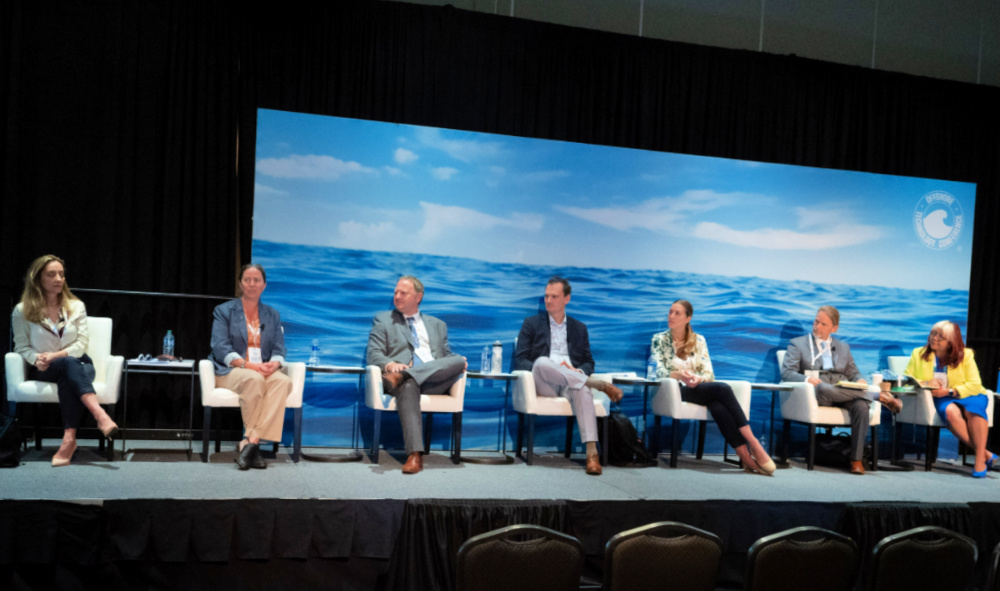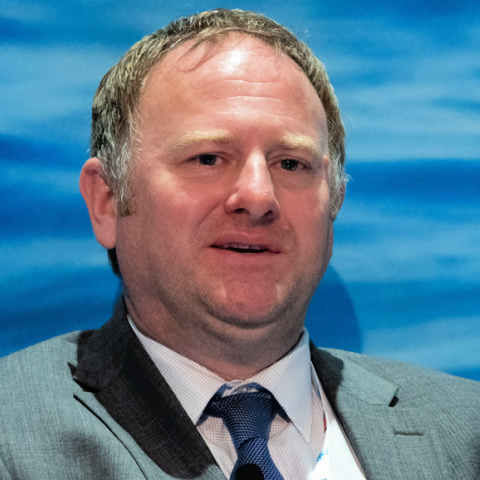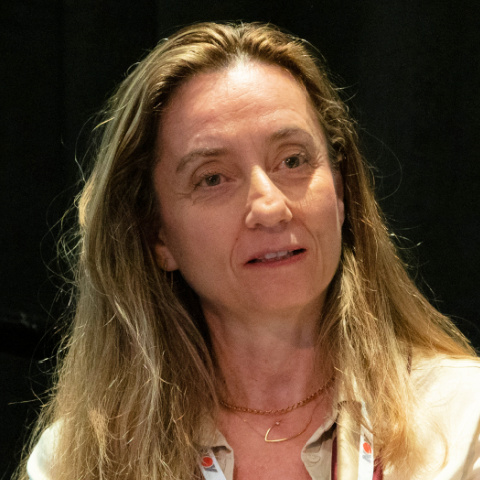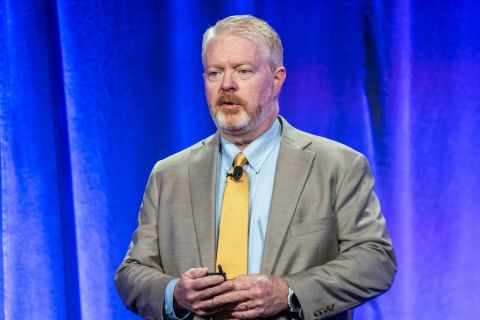
HOUSTON—Affordability, scalability, vessel needs and grid connections are among the challenges ahead for offshore U.S. wind developers as the nation aims to deploy at least 30 gigawatts (GW) of capacity by 2030, panelists said May 2 at the Offshore Technology Conference (OTC).
However, the industry is capable of turning those challenges into opportunities by building on transferrable skills from the offshore oil and gas industry along with learning lessons from regions—such as Europe—where offshore wind developments are further along to avoid making the same mistakes, they agreed.
“It’s going to be really challenging to deliver the quantity of offshore wind farms that we need, but it’s not technically infeasible.”—Rain Byars, technical director, Atlantic Shores
The conversation between the group of experts—some of which got their start in oil and gas—took place as the energy transition moves forward with focus on carbon management, lowering emissions and increasing reliance on renewable energy in a shift away from carbon-intense fossil fuels.
“Energy transition is a global priority right now. Offshore wind is not the only answer to that but it’s going to be a critical part of the energy mix of the future,” said Rain Byars, technical director of Atlantic Shores, the 50:50 joint venture between Shell New Energies US LLC and EDF Renewables developing a wind project offshore New Jersey with a potential to produce of 3 GW of wind energy—enough to power about 1.5 million homes.
“It’s going to be really challenging to deliver the quantity of offshore wind farms that we need, but it’s not technically infeasible. … It’s very possible as long as we bring the necessary amount of focus, planning and careful management.”
Keeping offshore wind affordable is another challenge, according to Karolina Pietrzak, deputy chief development officer for SimplyBlue Group. She cautioned that developers should be aware of the cost of energy when making substantial investments in wind projects.
Key to affordability is sustainable industry growth and optimizing project development to help avoid cost overruns, she said.

Deploying 30 GW by 2030 requires 2,100 wind turbines and foundations, 6,800 miles of cable and an annual workforce of at least 12,300, Pietrzak said, adding both state and federal local content will be needed to enable local supply chain growth. Add to this the need for 58 crew transfer vessels, 11 service operation vessels, 10 transport vessels, five to six wind turbine installation vessels, four cable lay vessels and two scour protection vessels.
Between 2023 and 2030, about 15 subsea rock installation vessels will be needed, according to Eleni Beyko, senior vice president for offshore wind for Great Lakes Dredge & Dock Co.
The company, which has been dredging in the U.S. since 1890, is working to meet vessel demand by constructing the First Jones Act-compliant subsea rock installation vessel in the U.S., Beyko said. Expected delivery is 2024.
“There are a lot of key lessons to be learned. … If ignored, you’re reinventing the wheel and there’s no need to do that.”—Duncan Sokolowski, interarray cable package manager, Vineyard Wind
The vessel, which marks the company’s entry into the U.S. offshore wind market, will be equipped with battery power, shore-power connection system and be capable of burning biofuel, the company has said.
“The market is real and it is real in the U.S. as well,” she said. “It is a great opportunity to use and transfer talent from oil and gas development supply chains that will be required,” including for developing infrastructure and vessels needed to deliver offshore wind in the U.S.
For Antoine Peiffer, vice president of engineering for floating offshore wind tech provider Principle Power, deploying large utility-scale projects—about 50-100 units of 15-20 megawatt (MW) capacity—will be a major challenge that brings design, logistical and procurement constraints. More steel and mooring lines will be needed, and turbines will have to be larger. That’s something Peiffer said the company’s WindFloat technology can handle.
“It is a great opportunity to use and transfer talent from oil and gas development supply chains that will be required.”—Eleni Beyko, senior vice president for offshore wind, Great Lakes Dredge & Dock Co.
WindFloat is a permanently moored semisubmersible, three column platform for offshore wind turbines. It’s operational at two wind farms, including the 50-MW Kincardine offshore Aberdeen. Peiffer said the technology can accommodate larger offshore wind turbines, highlighting its nonlinear scaling relationship between hull weight and turbine capacity among other features.
In addition to getting needed infrastructure to deploy projects, he added a capacity on the grid for large-scale projects is another challenge, singling out opportunities offshore California.
Off the East Coast, however, offshore wind developments are progressing.
Vineyard Wind is the first commercial-scale wind project offshore the U.S. Located offshore Massachusetts, Vineyard Wind 1 will include an array of 62 wind turbines spaced about 1 nautical mile apart, generating 800 MW of electricity annually—enough to power over 400,000 homes, the company has said. It includes about 124 miles of 66 kV array cables.
Duncan Sokolowski, interarray cable package manager for Vineyard Wind, suggested U.S. offshore wind players learn lessons from European offshore wind companies.
Some companies went bankrupt and there were cost overruns, he said. “There are a lot of key lessons to be learned. … If ignored, you’re reinventing the wheel and there’s no need to do that.”
MORE OTC 2022 CONTENT:
How BP is Optimizing Gulf of Mexico for Net-zero World
Diversity Failures are Hurting the Bottom Line
Preventing a Cyberwar Offshore
Full-Field Development—Revitalizing Oil and Gas Fields: Schlumberger
Recommended Reading
BKV CEO Chris Kalnin says ‘Forgotten’ Barnett Ripe for Refracs
2024-04-02 - The Barnett Shale is “ripe for fracs” and offers opportunities to boost natural gas production to historic levels, BKV Corp. CEO and Founder Chris Kalnin said at the DUG GAS+ Conference and Expo.
How Diversified Already Surpassed its 2030 Emissions Goals
2024-04-12 - Through Diversified Energy’s “aggressive” voluntary leak detection and repair program, the company has already hit its 2030 emission goal and is en route to 2040 targets, the company says.



